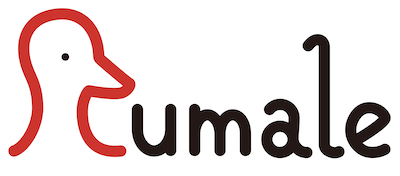Rumale (Ruby machine learning) is a machine learning library in Ruby. Rumale provides machine learning algorithms with interfaces similar to Scikit-Learn in Python. Rumale supports Support Vector Machine, Logistic Regression, Ridge, Lasso, Multi-layer Perceptron, Naive Bayes, Decision Tree, Gradient Tree Boosting, Random Forest, K-Means, Gaussian Mixture Model, DBSCAN, Spectral Clustering, Mutidimensional Scaling, t-SNE, Fisher Discriminant Analysis, Neighbourhood Component Analysis, Principal Component Analysis, Non-negative Matrix Factorization, and many other algorithms.
Add this line to your application's Gemfile:
gem 'rumale'And then execute:
$ bundle
Or install it yourself as:
$ gem install rumale
Rumale provides function loading libsvm format dataset file. We start by downloading the pendigits dataset from LIBSVM Data web site.
$ wget https://www.csie.ntu.edu.tw/~cjlin/libsvmtools/datasets/multiclass/pendigits
$ wget https://www.csie.ntu.edu.tw/~cjlin/libsvmtools/datasets/multiclass/pendigits.tTraining of the classifier with Linear SVM and RBF kernel feature map is the following code.
require 'rumale'
# Load the training dataset.
samples, labels = Rumale::Dataset.load_libsvm_file('pendigits')
# Map training data to RBF kernel feature space.
transformer = Rumale::KernelApproximation::RBF.new(gamma: 0.0001, n_components: 1024, random_seed: 1)
transformed = transformer.fit_transform(samples)
# Train linear SVM classifier.
classifier = Rumale::LinearModel::SVC.new(reg_param: 0.0001)
classifier.fit(transformed, labels)
# Save the model.
File.open('transformer.dat', 'wb') { |f| f.write(Marshal.dump(transformer)) }
File.open('classifier.dat', 'wb') { |f| f.write(Marshal.dump(classifier)) }Classifying testing data with the trained classifier is the following code.
require 'rumale'
# Load the testing dataset.
samples, labels = Rumale::Dataset.load_libsvm_file('pendigits.t')
# Load the model.
transformer = Marshal.load(File.binread('transformer.dat'))
classifier = Marshal.load(File.binread('classifier.dat'))
# Map testing data to RBF kernel feature space.
transformed = transformer.transform(samples)
# Classify the testing data and evaluate prediction results.
puts("Accuracy: %.1f%%" % (100.0 * classifier.score(transformed, labels)))
# Other evaluating approach
# results = classifier.predict(transformed)
# evaluator = Rumale::EvaluationMeasure::Accuracy.new
# puts("Accuracy: %.1f%%" % (100.0 * evaluator.score(results, labels)))Execution of the above scripts result in the following.
$ ruby train.rb
$ ruby test.rb
Accuracy: 98.5%require 'rumale'
# Load dataset.
samples, labels = Rumale::Dataset.load_libsvm_file('pendigits')
# Define the estimator to be evaluated.
lr = Rumale::LinearModel::LogisticRegression.new
# Define the evaluation measure, splitting strategy, and cross validation.
ev = Rumale::EvaluationMeasure::Accuracy.new
kf = Rumale::ModelSelection::StratifiedKFold.new(n_splits: 5, shuffle: true, random_seed: 1)
cv = Rumale::ModelSelection::CrossValidation.new(estimator: lr, splitter: kf, evaluator: ev)
# Perform 5-cross validation.
report = cv.perform(samples, labels)
# Output result.
mean_accuracy = report[:test_score].sum / kf.n_splits
puts "5-CV mean accuracy: %.1f%%" % (100.0 * mean_accuracy)Execution of the above scripts result in the following.
$ ruby cross_validation.rb
5-CV mean accuracy: 95.5%Rumale uses Numo::NArray for typed arrays. Loading the Numo::Linalg allows to perform matrix and vector product of Numo::NArray using BLAS libraries. Some machine learning algorithms frequently compute matrix and vector products, the execution speed of such algorithms can be expected to be accelerated.
Install Numo::Linalg gem.
$ gem install numo-linalgIn ruby script, just load Numo::Linalg along with Rumale.
require 'numo/linalg/autoloader'
require 'rumale'Numo::Linalg allows user selection of background libraries for BLAS/LAPACK. Instead of fixing the background library, Numo::OpenBLAS and Numo::BLIS are available to simplify installation.
Numo::TinyLinalg is a subset library from Numo::Linalg consisting only of methods used in machine learning algorithms. Numo::TinyLinalg only supports OpenBLAS as a backend library for BLAS and LAPACK. If the OpenBLAS library is not found during installation, Numo::TinyLinalg downloads and builds that.
$ gem install numo-tiny_linalgLoad Numo::TinyLinalg instead of Numo::Linalg.
require 'numo/tiny_linalg'
Numo::Linalg = Numo::TinyLinalg
require 'rumale'Several estimators in Rumale support parallel processing. Parallel processing in Rumale is realized by Parallel gem, so install and load it.
$ gem install parallelrequire 'parallel'
require 'rumale'Estimators that support parallel processing have n_jobs parameter. When -1 is given to n_jobs parameter, all processors are used.
estimator = Rumale::Ensemble::RandomForestClassifier.new(n_jobs: -1, random_seed: 1)- Rumale::SVM provides support vector machine algorithms in LIBSVM and LIBLINEAR with Rumale interface.
- Rumale::Torch provides the learning and inference by the neural network defined in torch.rb with Rumale interface.
The gem is available as open source under the terms of the BSD-3-Clause License.


